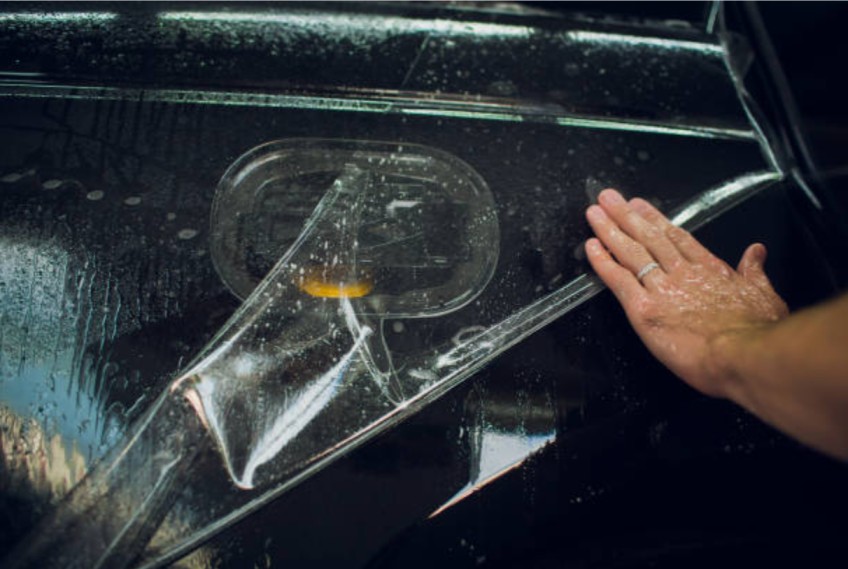Whether it’s automotive or architectural window tinting, starting out requires more than just a film and a squeegee. To achieve professional results, understanding the supplies needed beforehand and gathering them is imperative. A window tinting process is not simply about skill. Rather the tools and materials available dictate the outcome too. This guide outlines everything required to build a reliable and dependable toolkit for both aspiring and expert tinting professionals.
So, whether you want to get into the business confidently, or intend on doing tinting for personal vehicles, delve into the post to learn about every single essential component and evaluate what best suits your needs.
All That You Should Know About Window Tinting Equipment
Each window tinter has to be well versed with certain fundamentals pertinent to any tinting procedure before moving towards personal preferences or expansion options. These include grades of window films of different quality, premium grade squeegees, cutting equipment, heating guns, and solvents that enable slipping. The film in itself has different shades, materials, and technology ranging from: dyed, metalized, ceramic, or carbon film, each serving an application depending on the main visibility preference, UV defense requisites, and climate.
Unsung heroes of tinting are squeegees, which are greatly underappreciated. Bearing a variety of sizes and flexibilities depending on shape and material of the window is essential. As is the case with use of sharp utility knives that have replaceable blades for precise cutting and edge trimming. Other essential squeegee tools are heat guns that are domes used to mold film to curved surfaces or use in automotive tinting. Skilled use of these tools guarantee clean installation with minimal need for rework. Every professional starts here—these are the tools that all experts need to master before dealing with finishing touches that withstand close examination.
Choosing the Right Film for the Job
Your success as a window tinter will heavily depend on selecting the appropriate film for each job. Considering customer preferences as well as legal restrictions and performance goals is a must, due to the sheer diversity of available window films. Every client comes with a unique set of requirements, be it for privacy, heat rejection, or UV filtering, and there is always a specific film designed for these functions.
Ceramic films are often regarded as the best due to having the greatest heat rejecting features without impairing visibility. Dyed films are easier on the pocket, but they also tend to break down faster due to prolonged sun exposure. Some clients prefer high reflectivity, metalized films, which have the downside of conflicting with cell phone signals. Knowing the strengths and weaknesses of each film type enables you to navigate through options and thus build that trust with your clients.
Also, working with known brands and suppliers gives you assurance of assured quality. Your checklist for window tint supplies should always include films from known manufacturers so that you are sure about their performance and warranty coverage. The right selection of film ensures the perfect ending with pleased clients, whether you are working on luxury cars or office buildings.
The Importance of Preparation and the Cleaning Tools Needed for It
If you are skilled at something but do not have the right equipment to perform professionally on a surface, your results will be sub-optimal. Every installer worth their salt will refer to cleanliness as the defining characteristic that makes the shield apply without bubbles and last. This is where a specific set of tools intended for preparation comes into play.
Supporting tools also include spray bottles for your slip solution, no-lint towels, scrapers for sponge type debris, and towels for border drying. While these tools might be viewed as beginner-level, they actually guarantee the installation is not affected by dust, oil, or other aggravating factors. Even the smallest tools like a glass compatible scraper blade can be the difference between a surface without evidence and an evidence-laden gradient tint.
Some specialists employ window preparation solutions that are designed to dissolve residues without affecting the window glass or any trim parts within sight using glass cutouts. Adding these items to your purpose supplies improves the ability to prepare surfaces reliably and quickly, making the rest of the installation more efficient and vastly reducing the likelihood of callbacks or replacement of the film.
Steps to Take for Efficient Applications
Now that you have the film ready, you can move on to the steps that make the application easy. Tinting is a medium that is highly technical and requires finesse, and the right tools when paired with good techniques can make even a novice proficient. Different squeegees are used during different phases of the application so that large amounts of solution can be removed, tight corners can be finished, and the final touches can be applied.
In automotive tinting, a skilled heat gun allows shrinking of film over rear windows or curved surfaces like headlights. Tucking of film behind window seals without damage is made possible through the use of corner cards or hard cards. Using chisels, edge tools and fine point squeegees allow smoothening of every edge, getting rid of every bubble while ensuring that each and every edge gets sealed.
Scaling Up: Supplies for Mobile and High-Volume Installers
Many professionals consider that success is not how good the window tint supplies and materials are, but how devoted each individual is in learning and refining his or her technique on every installation.
Ultimately, having spare blades, refill bottles, and microfiber cloths ensures a smooth and effortless workflow. Tool accessibility can make a big difference in productivity and job satisfaction. An installer who is well prepared is an installer who is confident.
As your business expands, or as your client workload increases, your ticklist for your window tint supplies will naturally change. For mobile workers, portable tool organizers alongside compact workstations can drastically change convenience and professionalism. Mobile units might also want to invest in battery-operated heat guns, compact pressure sprayers with water tanks, and foldable film cutting work tables.
Automated film cutters alongside software-based pattern libraries are essential to anyone managing high volume shops or commercial installations. Automated systems utilize preloaded vehicle templates for cutting film shapes which eliminates the need for guesswork. Consumables also allow film rolls to be purchased in bulk and set to custom lengths so there’s never the risk of overstocking while still ensuring there’s sufficient supply available.
Importance of inventory tracking peaks at this point. The ability to track how much film is remaining, which tools are wearing out, and knowing when to reorder supplies can greatly streamline processes and save additional costs. Some even have management apps that provide tracking for warranties and training materials related to your work, all aimed at enhancing your success.
As a business beginner or a seasoned contractor, syncing your supplies with your company’s model and targeted growth aspirations will boost your efficiency and profit margins. As the window tinting market keeps growing, being ahead in the right tools and practices will distinguish the skilled from the untrained in the industry.


